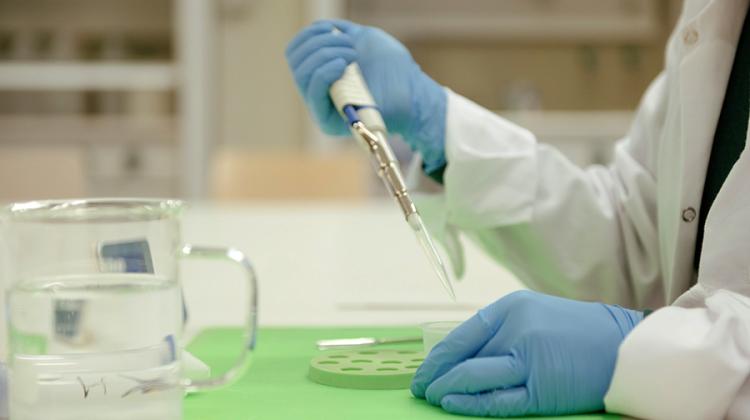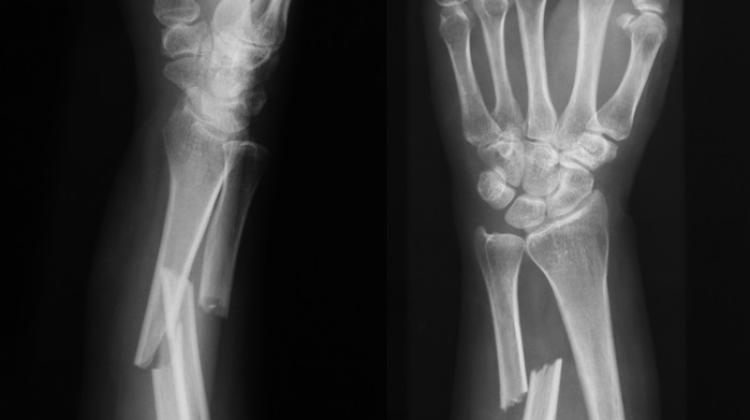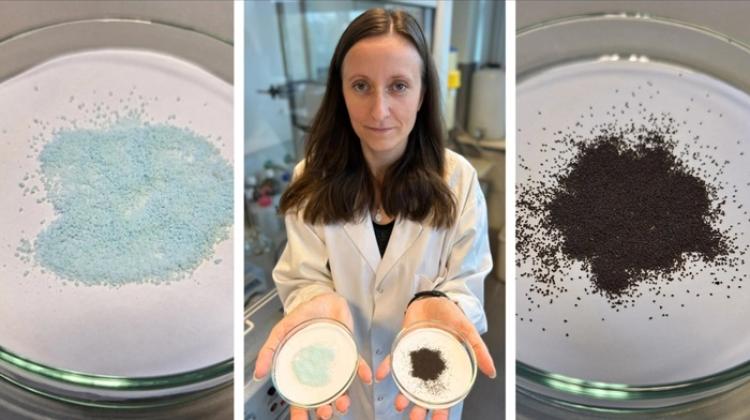Polish functional bone cements to replace bone defects and accelerate their regeneration

Scientists and students from the Gdańsk University of Technology are working on injectable bone cements that support tissue reconstruction. The invention, which may be used in orthopaedics and trauma surgery, has been submitted for patent protection.
According to the Press Office of the Gdańsk University of Technology, bone cements are biomaterials that act as self-hardening bone substitutes. They consist of powder and liquid which, when mixed, form a paste that hardens as a result of a specific chemical reaction when applied to the body.
Currently, polymer (based on polymethyl methacrylate) or ceramic (based on calcium phosphates) cements are mainly used in medicine. Both of them are far from perfect. The former are not bioactive, which means that they cannot form a stable bioconnection with bone tissue and do not support regeneration. The latter have poor mechanical properties and are difficult to apply. Young scientists from the Gdańsk University of Technology started working on completely new, alternative materials without the above limitations.
'We can already offer new solutions in the aspect of injectable biocomposite bone cements, which we have developed on the basis of magnesium phosphate and enriched with various hydrogels,’ says the research project leader, Dr. Marcin Wekwejt from the Department of Biomaterials Technology at the Faculty of Mechanical Engineering and Ship Technology. 'Our cements have improved functional properties and reduced fragility, thanks to which they have significant potential for bone reconstruction. When used in minimally invasive surgical procedures, they should meet the requirements of modern medicine.’
He adds that the project is at an advanced stage, and current work concerns further optimisation of the new cements' biofunctionality. The scientists want to obtain a more biomimetic material - one that better imitates real tissue - with increased mechanical strength, pseudoplasticity and physicochemical properties tailored to specific medical applications.
'We have taken up the challenge of developing a double-setting cement that is created as a result of two controllable and simultaneous hardening reactions: ceramic (hydration) and polymer (cross linking), so that the hardening rate can be additionally adjusted to a given surgical procedure, for even easier and safer application of the material,’ says Dr. Wekwejt. He adds: ‘Our goal is that our cements should be fully biodegradable after implantation and demonstrate the most beneficial biological properties. This also means that by releasing bioactive ions, the material is supposed to support the proliferation of bone cells and promote the formation of a stable bond with the human body, contributing to effective bone regeneration.’
The cements prepared by the Gdańsk University of Technology team are intended for medical applications. They can be used in fractures, osteoporosis, diseases such as peri-implantitis (inflammatory reaction of surrounding tissues to the implant) and in bone defects after tumour resection.
The paper 'Dual-Setting Bone Cement Based On Magnesium Phosphate Modified with Glycol Methacrylate Designed for Biomedical Applications' was published in the journalACS Applied Materials & Interfaces (https://doi.org/10.1021/acsami.3c14491). It was prepared in cooperation with the Department for Functional Materials in Medicine and Dentistry of the University of Würzburg. It describes the use of a hydrogel component based on poly(HEMA) in magnesium phosphate cement.
'The project continues and with each subsequent stage there are more and more promising results. We are already preparing further patent applications and scientific publications,’ says Dr. Wekwejt. (PAP)
Katarzyna Czechowicz
kap/ zan/ kap/
tr. RL
Przed dodaniem komentarza prosimy o zapoznanie z Regulaminem forum serwisu Nauka w Polsce.


















